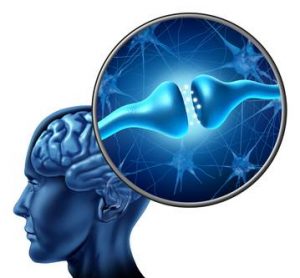Have you ever heard of the Emotional Freedom Technique (EFT) and wondered what it is all about?
As a hypnotherapist in the UK, EFT is a powerful tool for emotional healing and stress reduction.
In this article, I will discuss what EFT is, how it works, the benefits it offers, and the various ways it can be used to address physical pain, emotional distress, limiting beliefs, and negative thoughts.
Come with me as we delve into the world of EFT and its transformative potential.
What is EFT?
EFT, also known as Emotional Freedom Technique, is a form of therapy that involves tapping specific meridian points on the body to address emotional and physical issues.
This therapeutic approach is based on the belief that disruptions in the body’s energy system can lead to emotional distress and physical symptoms. By tapping on these meridian points while focusing on the specific issue, EFT aims to restore balance in the body’s energy flow, thereby relieving stress and promoting overall well-being. Scientific studies have shown promising results in terms of reducing anxiety, improving mood, and even alleviating physical pain through the practice of EFT. The technique combines elements of cognitive therapy, exposure therapy, and somatic stimulation to address a wide range of psychological and physical conditions.
How Does EFT Work?
Understanding how EFT works involves examining its impact on the brain, emotions, and neural pathways. Research using fMRI and PET scans has highlighted the neurological mechanisms underlying EFT’s effectiveness.
Through these imaging techniques, scientists have observed that EFT can regulate activity in the amygdala, a key player in processing emotions such as fear and anxiety. Furthermore, neuroplasticity appears to be heightened during EFT sessions, facilitating the rewiring of neural connections associated with traumatic memories. This process not only alleviates symptoms of conditions like PTSD but also enhances overall emotional resilience.

Identify the Issue
Before applying EFT, it is crucial to identify the root issue causing emotional distress or trauma. Recognising triggers and understanding the amygdala’s role in emotional responses can guide the therapeutic process.
As a central component of the brain’s limbic system, the amygdala plays a crucial role in processing emotions, especially those related to fear and trauma. It is a key player in the fight-or-flight response, influencing our reactions to various stimuli.
By looking into the underlying causes of emotional distress, individuals can gain insights into their triggers and patterns of response. This introspection fosters self-awareness and lays the groundwork for implementing effective strategies such as mindfulness.
Rate the Intensity
Once the issue is identified, it is essential to rate the intensity of emotional distress or symptoms such as anxiety, PTSD, or depression. This step quantifies the emotional impact and monitors progress throughout the EFT session.
Measuring emotional intensity in EFT sessions involves using a scaling system where individuals rate their distress level. This rating typically ranges from 0 to 10, with 10 representing the highest intensity. By assigning a numerical value to feelings of anxiety, PTSD, or depression, therapists gain a clearer understanding of the client’s emotional state.
This process enables therapists to track changes in emotional distress over time and adjust treatment strategies accordingly. In cases where stress hormones like cortisol play a role, quantitative assessments help assess how these levels fluctuate in response to emotional triggers.

Setup Statement
The setup statement in EFT is a cognitive restructuring tool that integrates affirmations with tapping on meridian points. This technique bridges the gap between emotions and cognitive-behavioural responses, fostering a mind-body connection.
By simultaneously addressing psychological and physiological aspects, EFT allows individuals to reframe negative thought patterns and holistically release emotional blockages. Through the process of tapping on specific meridian points while verbalising affirmations, the brain’s response to stressors is recalibrated, promoting a sense of emotional balance and well-being.
This approach not only aids in restructuring maladaptive beliefs but also cultivates self-awareness and self-compassion. The synergy between cognitive restructuring and tapping activates the brain’s relaxation response, facilitating emotional regulation and reducing the intensity of distressing emotions.
Tapping Sequence
The tapping sequence in EFT involves gently tapping specific meridian points on the body, similar to acupuncture techniques. This rhythmic process helps in releasing blocked energy and addressing emotional imbalances.
By tapping these specific points, practitioners believe they can stimulate the body’s energy flow and restore balance.
Each meridian point corresponds to different organs and emotions, releasing negative energies and promoting well-being.
This practice, rooted in ancient Chinese medicine, is said to help clear energy blockages and improve overall health.
Reassess the Intensity
After completing the tapping sequence, it is crucial to reassess the emotional intensity to track changes and improvements following the EFT session. By checking in with oneself post-tapping, individuals can gain insights into how their emotions have shifted since the session began. This process allows for a deeper understanding of the efficacy of the EFT technique..

What Are the Benefits of EFT?
The benefits of EFT encompass a wide range of emotional and physical improvements, making it a versatile self-help tool for managing stress and enhancing overall well-being.
One of the key strengths of EFT lies in its ability to reduce anxiety and improve emotional well-being by tapping on specific acupressure points. By addressing negative emotions and limiting beliefs, EFT can help individuals release emotional blocks and achieve inner peace.
EFT techniques have been found to boost energy levels and promote relaxation, making it an effective method for combating fatigue and improving focus. This holistic approach to healing can also enhance the body’s natural ability to heal itself, leading to improved physical health and vitality.
Stress Reduction
EFT has shown promising results in stress reduction by addressing emotional triggers and promoting relaxation responses. Its clinical effectiveness is supported by research in neuroscience and body energy dynamics.
When individuals experience stress, it can manifest as a result of unbalanced emotions and energy blockages in the body. By tapping on specific acupressure points while focusing on distressing emotions, EFT helps to rebalance the body’s energy flow and calm the nervous system. Combining cognitive restructuring and somatic techniques, EFT offers a holistic approach to managing stress. Neuroscientific studies have shown that EFT can lower cortisol levels, reduce anxiety, and promote emotional regulation, improving overall well-being.
Emotional Healing
EFT serves as a potent tool for emotional healing, aiding individuals in addressing deep-seated emotions related to anxiety, PTSD, and other psychological traumas. Its self-help nature enables individuals to take charge of their emotional well-being.
EFT, known as the Emotional Freedom Technique or tapping therapy, works by tapping specific acupressure points corresponding to different emotions and psychological states. By focusing on these energy meridians, EFT aims to rewire the brain’s response to emotional triggers and release negative emotions stored in the body.
This technique offers a holistic approach to healing, integrating mind-body connection and emotional release. Individuals using EFT often report feeling a sense of enablement as they actively engage in the process of identifying and addressing their emotional issues. This enablement stems from realising they have the tools to manage their emotions and navigate challenges effectively.

Pain Management
In pain management, EFT has shown notable clinical effectiveness in alleviating physical discomfort by targeting meridian points and rebalancing the body’s energy flow. Its holistic approach offers a complementary method for pain relief.
Emotional Freedom Technique (EFT) is rooted in the idea that the body’s energy flow imbalances can contribute to physical ailments. By tapping on specific meridian points while focusing on the issue, EFT aims to release emotional and energetic blockages that may manifest as pain.
Clinical studies have demonstrated the efficacy of EFT in managing various types of pain, including chronic pain, migraines, and musculoskeletal discomfort. EFT’s gentle yet potent effects make it a valuable tool in integrative pain management approaches.
Improved Mental Health
EFT significantly enhances mental health by incorporating cognitive-behavioural therapy techniques, influencing neural pathways, and promoting mindfulness practices. Its impact on the amygdala and emotional regulation fosters improved mental well-being.
Integrating cognitive-behavioural therapy techniques facilitates identifying and restructuring negative thought patterns, promoting a healthier mindset. Individuals learn to be present, reduce stress, and cultivate emotional balance through mindfulness practices. This combination positively affects neural pathways, leading to heightened self-awareness, emotional resilience, and overall mental well-being.

Self-Empowerment
EFT enables individuals to take control of their emotional well-being and self-development journey. Engaging in Emotional Freedom Techniques (EFT) enables individuals to tap into their inner strength and resilience, fostering a deep sense of self-enablement. Through the practice of EFT, individuals learn to acknowledge and address their emotions, ultimately leading to greater self-awareness and emotional well-being. This powerful tool provides a holistic approach to self-improvement, offering a pathway towards personal growth and enablement.
What Can EFT Be Used For?
EFT can be effectively utilised for addressing a spectrum of issues, ranging from physical pain and symptoms to emotional distress, trauma, anxiety, and depression. Its mind-body approach offers a holistic treatment method for various conditions.
The versatility of EFT extends not only to alleviating the symptoms of physical pain but also to providing relief from deeply rooted emotional distress and trauma. By recognising the interconnectedness of the mind and body, EFT practitioners can help individuals navigate through their anxiety and depression with a comprehensive approach that considers the whole person. This holistic nature of EFT fosters a sense of balance and well-being that goes beyond symptom management, aiming for long-lasting healing and transformation.
Physical Pain and Symptoms
EFT can aid in managing physical pain and symptoms by targeting energy imbalances akin to acupuncture. Its mind-body approach incorporates elements of mindfulness to address physical discomfort.
By focusing on specific energy meridian points in the body, EFT aims to unblock stagnant energy flow and restore balance, relieving pain and discomfort. The gentle tapping technique recurs the body’s energy system, allowing natural healing processes to occur.
Incorporating mindfulness practices in EFT sessions enhances the individual’s awareness of physical sensations and emotions, fostering a deeper connection to the body. This heightened awareness can lead to a better understanding of the root causes of physical ailments, paving the way for long-term relief and overall well-being.
Emotional Distress and Trauma
Regarding emotional distress and trauma, EFT offers an effective treatment modality for managing conditions like PTSD, depression, and traumatic experiences. Its impact on the amygdala and emotional regulation aids in trauma resolution. The emotional Freedom Technique, commonly known as EFT, is a form of psychological acupressure that involves tapping specific energy points in the body to help alleviate emotional distress. By focusing on these meridian points, EFT aims to realign the body’s energy system and reduce the intensity of negative emotions.
The amygdala, a key part of the brain involved in the processing of emotions, plays a crucial role in how trauma impacts an individual. The amygdala can be effectively regulated through EFT, helping individuals manage their emotional responses and process traumatic experiences more healthily.
Limiting Beliefs and Negative Thoughts
EFT is instrumental in addressing limiting beliefs and negative thought patterns through cognitive-behavioural therapy principles with mind-body approaches, offering a comprehensive solution for altering thought patterns.
Combining techniques such as tapping acupressure points with exploring and reframing negative beliefs, EFT helps individuals navigate their inner landscapes with greater clarity and emotional balance. This approach fosters a deeper understanding of how thoughts, emotions, and physical sensations are interconnected, paving the way for transformative change.

Summary
Emotional Freedom Technique (EFT) emerges as a versatile therapy with profound implications for managing conditions like anxiety, PTSD, depression, stress, and trauma and promoting mindfulness through meridian-based interventions.
Through its innovative approach, EFT offers a unique blend of psychological insight and bodily awareness, allowing individuals to address deep-seated emotional issues. By tapping into the body’s energy system, EFT facilitates the release of negative emotions and promotes self-healing. This process alleviates symptoms and fosters a sense of enablement and resilience.
Furthermore, EFT can be easily integrated into daily routines, providing individuals with a practical tool for managing stress and anxiety in real-time situations. Combining mindfulness techniques and meridian-based interventions in EFT offers a holistic approach to emotional well-being.
Frequently Asked Questions
What is EFT?
EFT stands for Emotional Freedom Technique, a form of energy psychology. It involves tapping on specific points in the body to release blockages and negative emotions, often reducing stress and anxiety.
How does EFT work?
EFT works by tapping on specific meridian points on the body while focusing on a specific issue or emotion. This tapping sends signals to the brain and helps to release any emotional or energetic blockages, allowing for a sense of emotional freedom and relief.
Can anyone learn and use EFT?
Yes, anyone can learn and use EFT. It is a simple and easy technique that can be taught and used by people of all ages and backgrounds. It can also be self-administered, making it a convenient tool for managing emotions.
What are the benefits of EFT?
EFT has many benefits, including reducing stress and anxiety, promoting relaxation, improving sleep, and helping with emotional and physical pain. It can also be used to address a wide range of issues, from phobias and traumas to physical ailments.
Is EFT scientifically proven?
While there is ongoing research on the effectiveness of numerous studies and anecdotal evidence that support its benefits, Many therapists and medical professionals have also incorporated EFT into their treatment plans.
Can EFT be used as a standalone therapy?
EFT can be used as a standalone therapy, but it can also be used in conjunction with other forms of therapy. It is often used in hypnotherapy sessions to help clients release any emotional blockages and achieve deeper levels of relaxation and healing.

